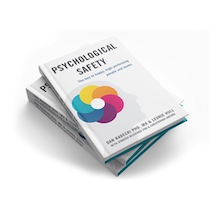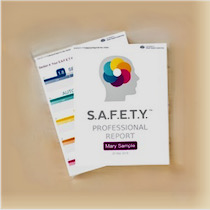…”we can dance if we want to, we can leave your friends behind because
your friends don’t dance and if they don’t dance well, they’re no friends of mine”…
– The Safety Dance (Men Without Hats)
Based on the lyrics from the 80’s band Men Without Hats, they may have avoided succumbing to “one hit wonder” status if they had simply understood the basic operating principle of our social brain. In 2015 Google created an initiative (Project Aristotle) to identify the defining characteristics of a high performing team. What are the values or competencies that make one team more effective than another? Is it experience? Knowledge base? Management skills? They spent millions of dollars quantifying numerous aspects of their employee’s lives. After crunching the data the results were published recently in the New York Times Magazine, and the findings were unexpected to many. Turns out that the best predictor of a high performing team is whether or not there is a sense of psychological safety within the group. If you’re not familiar with the idea, psychological safety is best summarized by Amy Edmondson from Harvard as:
Psychological safety is:
A shared belief held by members of a team that the team is safe for interpersonal risk-taking.
A sense of confidence that the team will not embarrass, reject or punish someone for speaking up.
This isn’t surprising when you consider the fact that our brain is wired to, above all else, detect and react to threat. The brain has evolved over a couple hundred-thousand years to ensure that our behavior is guided to minimize threat … to ensure that we have safety in our existence. If you think about it, that makes perfect sense. We can’t really use any of our amazing brain capabilities if we’re in danger. So we have a bunch of networks in our brain that deal with monitoring for and detecting threat, but social threats (such as the kind we encounter at work) are just as powerful as physical threats, and sometimes even more powerful!
Google has discovered what our brains have known all along … we need a sense of perceived safety in order to have optimal performance. So how can we wrap our head around this idea of psychological safety and understand how it drives our behavior? The S.A.F.E.T.Y.™ model describes 6 key drivers of psychological safety which are underpinned by scientific research: Security, Autonomy, Fairness, Esteem, Trust and You. By identifying and exploring your strongest S.A.F.E.T.Y.™ drivers, you can gain insight into how to best create a sense of psychological safety for yourself, and how to build a high performing team.
The Academy of Brain-based Leadership has created a simple online tool which assesses your personal S.A.F.E.T.Y.™ profile and gives you insight into how this profile impacts your ability to deal with others effectively and optimize your performance. Visit www.brainleadership.com for more information on how to get started on your road to S.A.F.E.T.Y.™, and why it’s necessary to foster relationships with a diversity of people … even those who don’t dance!










